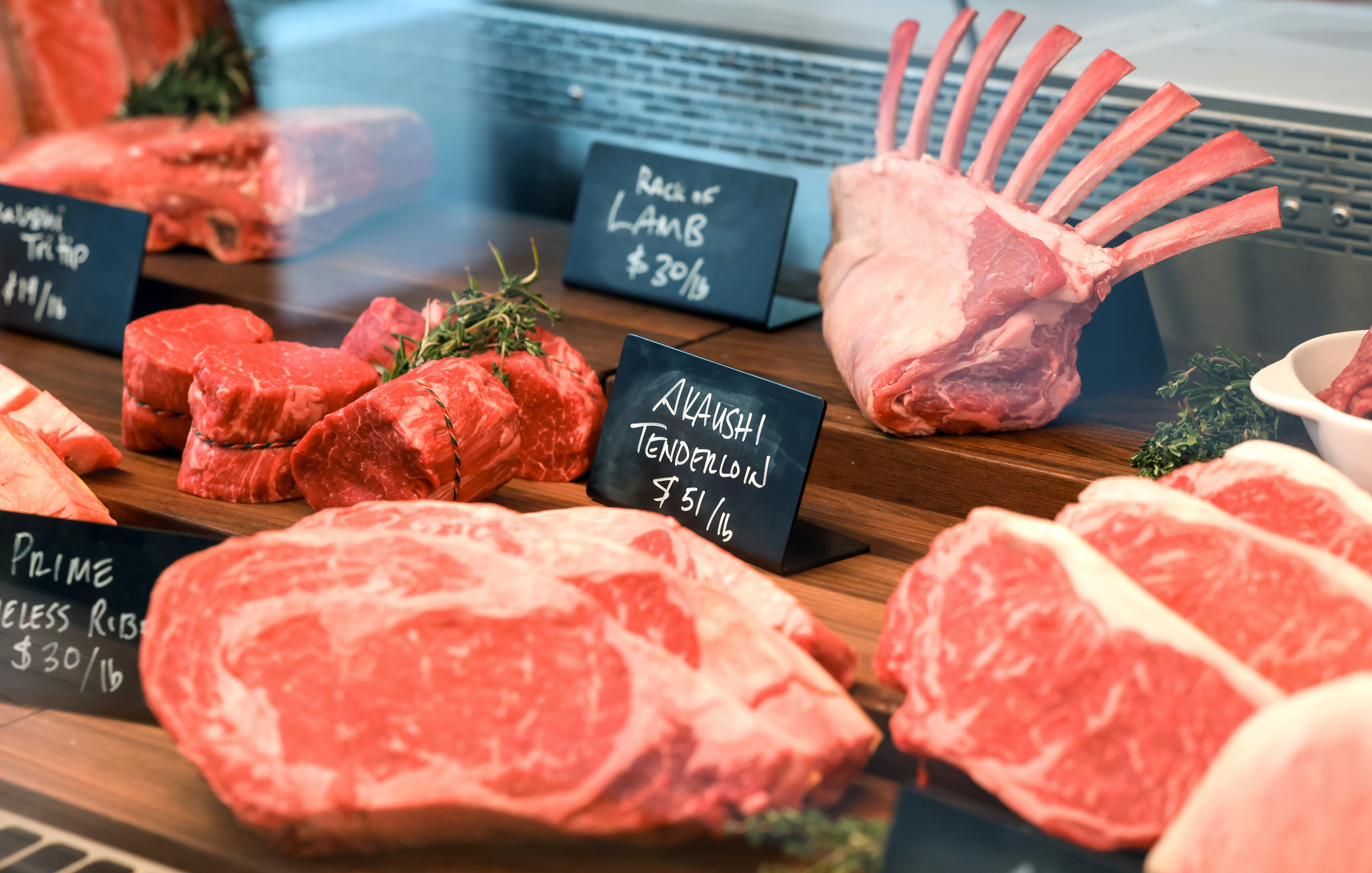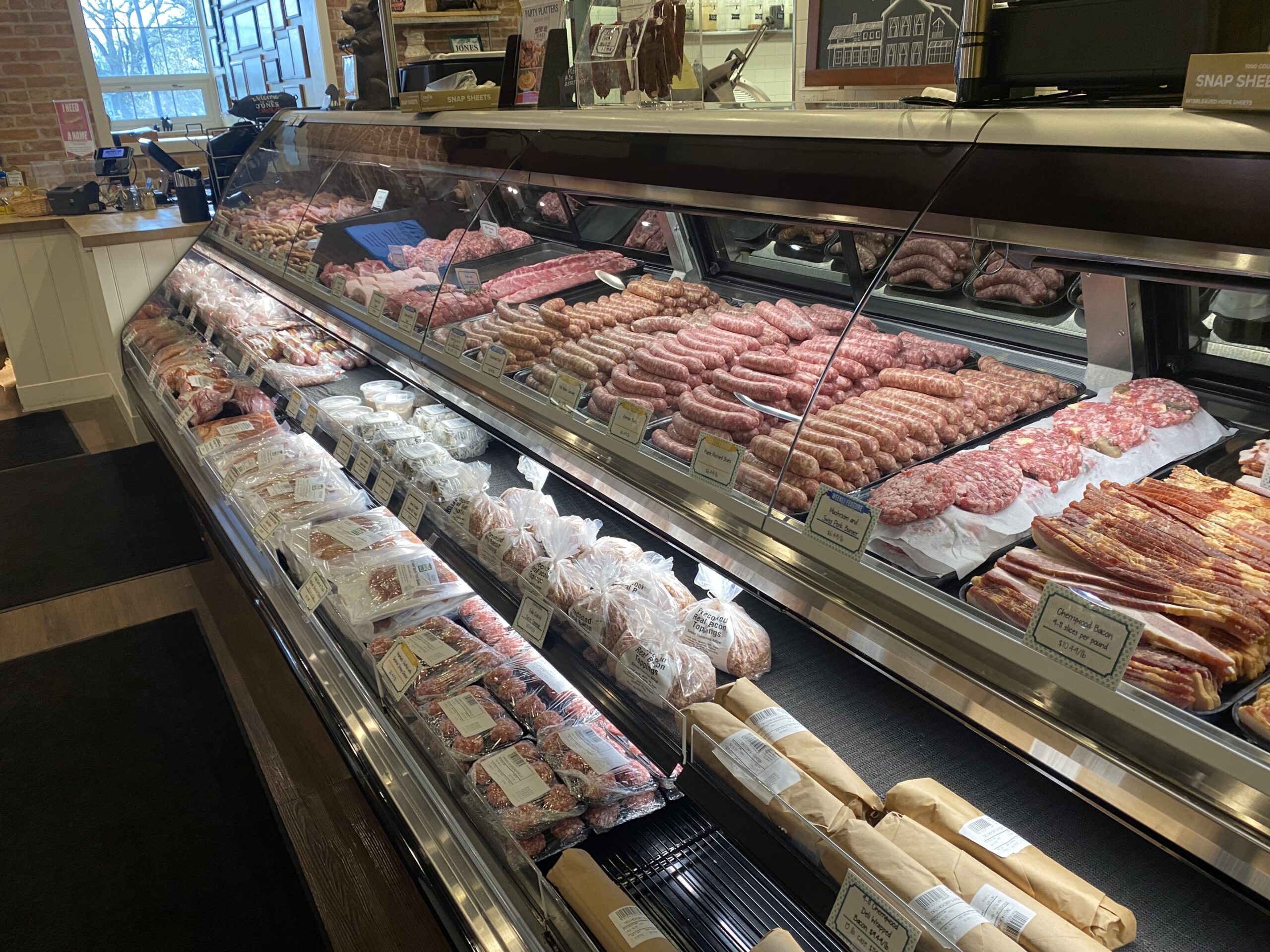Bagley Farms Meat Market Edwardsville IL: Your Go-To Destination for Local Meat Selection
Bagley Farms Meat Market Edwardsville IL: Your Go-To Destination for Local Meat Selection
Blog Article
Discover the Art of the Butcher's Cut in a Modern Meat Market
In the ever-evolving landscape of modern-day meat markets, the butcher's cut has actually transcended its standard roots, merging age-old workmanship with modern methods. bagley farms meat market edwardsville il. Today's butchers are not simply cpus of meat; they are well-informed artisans who emphasize sustainability and ethical sourcing. Their competence in picking and preparing cuts tailored to certain culinary needs offers an unequaled eating experience. What really sets the modern-day butcher apart is their capability to build a much deeper connection in between consumers and the beginnings of their meat. How do these masters equilibrium custom with innovation, and what effects does this have for the future of meat usage?
Development of Butchery Techniques

The mid-20th century saw butchery strategies additionally fine-tuned by scientific understandings right into muscle mass biology and meat aging, enhancing both inflammation and preference. Developments like vacuum product packaging and refrigeration prolonged product shelf-life, allowing butchers to expand offerings and boost quality assurance. This period additionally noted the rise of customized tools, such as band saws and meat slicers, which enhanced precision and efficiency in meat handling.
The 21st century has presented electronic technology right into the butchery realm. Computerized systems currently assist in monitoring animal provenance and maximizing cuts to satisfy particular customer choices. Furthermore, a revival in artisanal butchery has arised, blending typical skills with modern expertise to deal with customers seeking moral and lasting meat options. This evolution emphasizes a dynamic interaction between practice and advancement, meeting modern demands while maintaining the craft's heritage.

Recognizing Meat Cuts

Understanding the complexities of meat cuts is important for both butchers and consumers looking for high quality and value. Each cut comes from a various component of the animal, imparting one-of-a-kind tastes, structures, and cooking methods. Proficiency of these distinctions not only boosts culinary experiences but additionally makes the most of the utility of each carcass. For butchers, specific cuts mirror skill and respect for the craft, making certain very little waste and ideal yield.
The key classifications of meat cuts consist of primal, sub-primal, and retail cuts. Butchers then damage these down further into sub-primal cuts, prior to finally creating retail cuts readily available to consumers, like ribeye or tenderloin.
Understanding muscle mass make-up is important; muscles utilized more regularly by the animal have a tendency to be harder and are best suited for slow-moving cooking approaches, while less-used muscles, like those discovered in the loin, are a lot more tender and suitable for grilling or roasting. Knowledge with these distinctions equips customers to make informed options, enhancing their culinary undertakings.
Selecting High Quality Meat
Picking the right meat involves more than simply selecting an aesthetically appealing piece from the screen. The art of picking quality meat needs a critical eye and knowledge of certain features that signify freshness Click This Link and quality. Firstly, take note of the color; beef ought to have a brilliant, cherry-red shade, while lamb must exhibit a soft pink tone, and pork a light pink. This shows the meat is fresh and hasn't been subjected to oxygen for too lengthy.
Second of all, think about the marbling, which describes the white flecks of fat within the muscular tissue. Appropriate marbling is a key indication of tenderness and taste, as it melts throughout cooking, boosting the meat's juiciness. Keep in mind, greater marbling usually correlates with exceptional high quality cuts, such as USDA Prime.
Appearance is one more crucial variable; meat ought to really feel firm to the touch, not slimed or overly soft. Additionally, bear in mind the scent. Fresh meat must have a tidy, neutral odor, without any sour or repulsive smells.
Combining Cuts With Food Preparation Techniques
Effectively pairing cuts of meat with the ideal cooking techniques is essential for accomplishing optimum taste and texture. Different cuts differ in inflammation, marbling, and connective tissue content, each needing details strategies to unlock their capacity. For circumstances, tender cuts like filet mignon and ribeye, with their inherent marbling, advantage from high-heat, quick-cooking approaches such as grilling or pan-searing. These methods enhance the meat's natural flavors and make sure a juicy surface.
Alternatively, harder cuts like brisket and chuck roast are abundant in collagen, which damages down into gelatin when cooked gradually. These cuts are suitable for braising or slow roasting, allowing the meat to soften with time and create deep, intricate flavors. Likewise, cuts such as short ribs and pork shoulder prosper with slow-cooking techniques, where prolonged cooking times transform their robust appearances right into succulent dishes.
Lamb shanks and oxtail, which need long term cooking to soften, are best candidates for cooking or sluggish simmering. These techniques coax out rich, passionate flavors while maintaining dampness. By recognizing the special qualities of each cut, cooks index and home cooks alike can elevate their cooking developments, guaranteeing each recipe is both pleasing and memorable.
The Butcher's Duty Today
Navigating the advancing landscape of the contemporary meat market, the butcher's role today prolongs beyond simple preparation of cuts. Contemporary butchers are cooking artisans, educators, and supporters for sustainable methods.
Along with crafting specific cuts, butchers now involve straight with consumers, providing cooking guidance and tailoring choices to fit individual demands and choices. Their know-how in meat aging, marbling, and taste profiles empowers customers to make educated decisions, improving their culinary experiences. This tailored solution exhibits the butcher's advancing role as a trusted advisor in the kitchen area.
Moreover, butchers are essential in lessening waste, using entire animals to develop varied items such as sausages and stocks - bagley farms meat market edwardsville il. This thorough method not only respects the pet however also lines up with contemporary sustainability objectives. By doing this, the modern-day butcher personifies both custom and advancement, adapting to an ever-changing market while maintaining the artistry and honesty of their craft

Verdict
Mastery in visite site recognizing varied meat cuts and quality signs equips butchers to give informed referrals, straightening specific cuts with optimum food preparation approaches. By honoring historical methods while embracing contemporary needs, the butcher's duty stays vital in today's sophisticated meat market.
Report this page